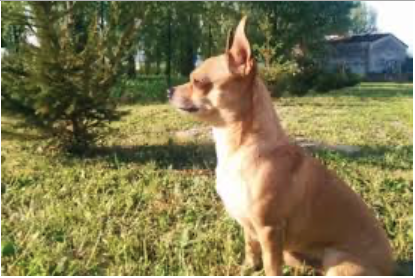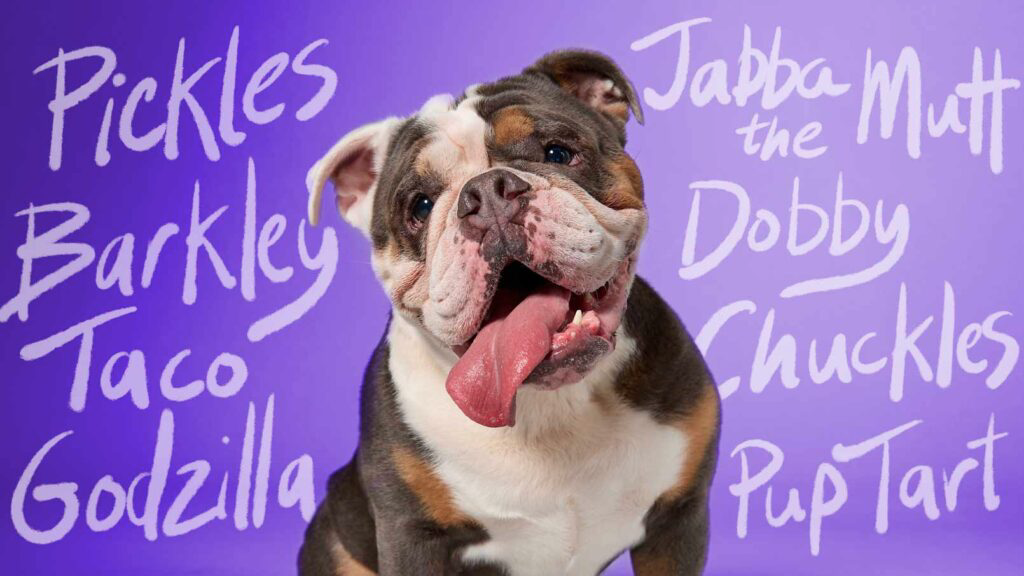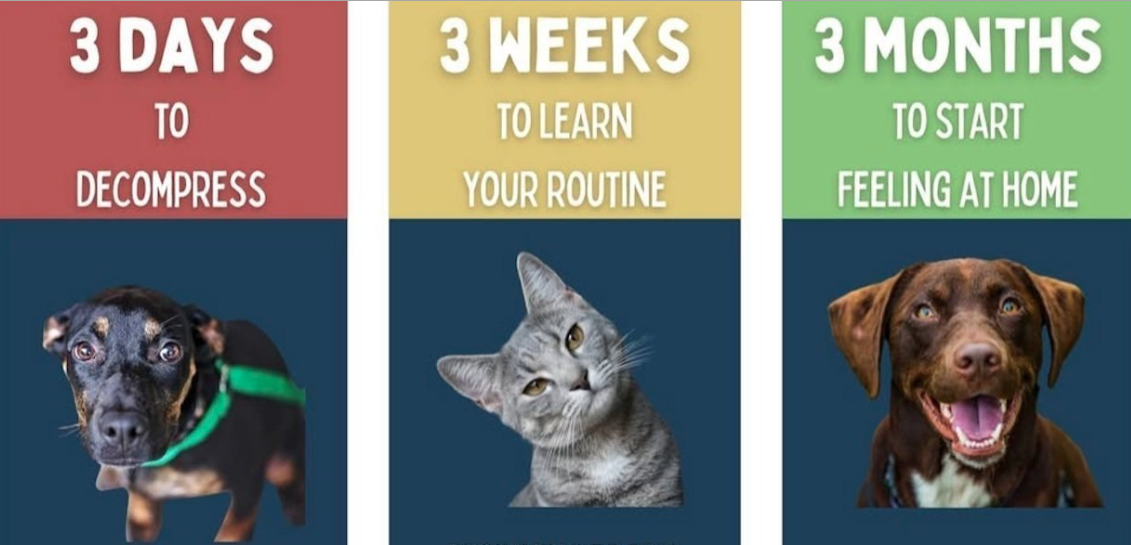Should I change my dog’s name?
When could name changing be a good, or bad, idea?
There is not one set rule for changing a name, as it usually depends on the dog’s background, character and intelligence level. But if it’s something you are considering, it’s always best to try the name the dog currently has for at least 3 days (which is usually called first stage decompression). They are new in your home and may be still too stressed to respond to any names or sounds as they start to decompress. However, if they act extra-stressed, become timid, or show other stressed body language signs or just completely ignore the sound of their name in the first week or so then maybe a name change is the way to go. But a word of advice- never just say their name at them over and again with no context and expect them to know what you want. And never take them out of the house or garden till they recall well to a name and other word cues (like ‘come’, ‘here’, ‘sit’, ‘wait’, or ‘heel’.)
Our dogs usually are named after we rescue them, as most have been abandoned in the street, or taken from the kill cages, so we don’t know their original name if they had one, so usually positively respond to their name and/or similar sounding words, but sometimes if they already come to us with a name, they can associate their name with something bad from their past. Renaming your rescue could be one of the most compassionate things you do for them if they associate the hearing of their name with an abusive, neglectful, or hostile past. If we find this to be the case, we usually rename them ourselves, carefully and letting them choose the sound. And of course, the rescue will always tell you if they respond well, or at all, to the name they already have, and what sounds they like, so any renaming needs to be done for the dog’s benefit, not for human sentimentality (such as wanting to name them after a dog that has passed away or a super fashionable name) and suggest name options that could work with the dog.
Pedigree dogs may have long or complicated breed names (for a human’s benefit, to prove their ancestry) and while you may be able to use part of it for their ‘daily name’, again see what sounds like they first before you decide. If you’re in a multi dog home, always gently steer the dog to sounds that are different to your resident pet(s). Younger dogs are usually quicker at learning a new name than an older dog or a dog that knows and already recalls to their name as well. And usually the shorter or simpler the name, the quicker the dog can learn it- don’t let that put you off longer names though if the dog likes it! You can always use a shorter version for daily use.
How humans and dogs see names differently
To their humans, a dog’s name is a very important part of their identity and how they start to feel they belong in your home. So it’s a very powerful bonding tool for the humans, often more than, or at least differently to how your new dog sees a name. For the dog, it’s more a case of a sound they can relate to as you train them, for recall, walks, and basic skills like sit and wait. It wouldn’t matter to the dog if the name was ‘Snugglebutt’ (usually more likely to be a nickname 😉 ) or ‘Steve’; ‘Elizabeth’ or ‘Engelbert’ (!) as long as they like it, but make sure it’s a name you won’t be embarrassed to call out on a walk! To dogs it’s a sound that lets them know you are home, have their backs in a stressful situation, or that they need to recall back to you on a walk.
As long as you never use their name with negative tones when you are trying to correct a behaviour that you want to address; always have cue word instead like ’stop’, ‘wait’, ’no thank you’ (not just no, as that is a word with so many meanings that it can confuse a dog); a sound like ‘nah-ah’ in a firm tone to help them break behaviour and focus on you instead; or a distraction cue like ‘what’s this?’ (when you have a toy, treat or other reward to hand) in a happy tone to pull their attention away from the barking, chewing or other behaviour you are trying to retrain out of the dog. Because of this, it’s always best to have a name that does not sound like a cue (e.g. ‘Toyah’ sounds like ‘toilet’, ‘Britt’ sounds like ‘sit’, ‘Drummer’ sounds like ‘come’, ‘Coco’ can sound like ‘no’, etc). Dogs can learn and understand 150-250 words, and some like Collies, Malis and other super smart dogs may be able to learn up to 1000 (!) and put them into context depending on the tone you use when saying them, rather like an intelligent toddler but you need to give them very distinct and different sounds for their name, and training words to give them a chance to learn easily, but also know you’re not trying to instruct and control them 24/7 right from when they first come home. Any words you teach your dogs have to be used repeatedly, daily if you think they are important words, as even the most gifted dog will forget a word after a year or two.
Why might it be harder from a dog from overseas to know their name?
Also something to bear in mind is that Romanian and Serbian accents are very different to English, so the dog may not recognise their name in an English accent at first, so always give your dogs time to learn your accent before you decide to completely change the sounds they are used to. But when a dog hasn’t been in our care long, they may not have learned their rescue name yet, or how to respond to it, or they just may not be a big fan of it, so there’s unlikely to be any psychological harm in trying their rescue name; or a name or names you had in mind as a new name, at the same time over the first days, and even weeks, to see which the dog likes and responds to best.
Whatever name you may have in mind, always wait till the dog arrives to see if they like the sound before you decide anything. If they can’t or don’t connect to the name you have chosen, it will be harder to bond with, and train your dog. You may have to give up your ‘dream name’ for a dog if they don’t like it (show stress or ignore it) or if it proves too hard to use it for training. And never use a super common name (like Bella, Luna, Milo, Charlie, Daisy, Max, Nala etc) unless you want stress and confusion on walks and in social situations when they meet other dogs called the same, and strange humans using ’their special sound’. If you’re not sure what dog names are currently popular, a quick Google search or asking the rescue for advice, can often help. On top of that, our dogs have often had a hard and scary life before we saved them, and they travel a long way to come home, so they deserve something special and unique to them, and we are always happy to advise here, including names/sounds we know they already like.
How to try different names with dogs
It’s usually best to try sounds first, rather than full names. Words are made up of letters that are either vowels (a, e, i, o, u, and ‘y’ when it sounds like ‘ee’ e.g. in ‘happy’ or ‘silly’) or consonants (all the other letters, and ‘y’ when it’s in words like ‘yellow’ or ‘York’.)
So it can be good to try vowel sounds first, and there are quite a lot!
‘A’ can sound short, like ‘a’ (lad, bad), long, like ‘ay’ (came, rain), broad like ‘aw’ (ball, call), or ‘ar’ (father, garden), an ‘o’ (what) or ‘uh’ (sofa, collar.)
‘E’ can sound like what’s called a short ‘e’ (egg, help), long like ‘ee’ (meat, teeth), like ‘uh’ (talent) ‘air’ (there, where) or an ‘i’ (eye).
‘I’ can also sound ’short’ (it, big), long (ice, like) or also ‘uh’ (pencil).
‘O’ can be short (hot, fox), long (boat, spoke), broad like ’or’ (short, bought), ‘oo’ (book, spoon, food) )and note depending on your accent these can sound totally different); or in combination in words like ‘boil’ or ‘out’, and again it can sound like ‘uh’ (company, above).
‘U’ can also sound short (cup, sun), long (rule, blue), broad almost like ‘oo’ (put, push) or even a ‘y’ consonant sound (use, music) and, as usual, also ‘uh’ (circus, album.)
And ‘Y’ as a vowel can be a long ‘e’ (very, happy), long ‘i’ (why, try) or short ‘I’ (typical, system.)
Most important to know, many of these sounds are all unique to English, and vowels sound very different in Romanian or Serbian. Neither language uses ‘a’ like ‘ay’ (pain, claim), for example, or ‘e’ like in greet, ‘i’ like in bite, ‘o’ like in stone, or ‘u’ like in beauty. So this could be why a name a dog has happily had for years does not work when they come home. And if they are partly responding to their rescue name, keeping the main sound but changing the rest, could also work. For example, they may be called ‘Ron’ and like the ‘R’ sound, so trying something like ‘Reggie’ or ‘Rupert’ might work better if they like it. Or they may be called ‘Piper’ and like the ‘i’ sound but not the rest, so names like Riley, Tyler or Lionel for a boy, or Lyra, Diana or Skye for a girl could be good options.
this is the face of a very confused dog! Look at the wide eyes, and the uncertain ears…
Consonants (all the other letters) are usually and luckily said a lot similarly in English and Romanian or Serbian. Some exceptions are words that have ‘ce’ or ‘ci’ in them, which Romanians pronounce as ‘ch’; ’s’ is almost always ‘sh’, or ’ts’ (like in bits); ‘h’ can be a lot more obvious than in English, similar to the Scouse (Liverpool) accent, ’t’ is said softer almost like ‘d’ or ‘th’; and ‘ge’ and ‘gi’ is always soft (like judge, not hard like in get). In Serbian ‘c’ sounds more like ‘ch’ and letters like ’n’, ‘l’ or ‘d’ is often combined with ‘j’ that is used like a ‘y’ (as in yes) for example, ‘nj’ sounds like ‘ny’ (as in canyon) ‘lj’ sounds like ‘ly’ (like in million) and ‘dj’ ends up sounding very soft (like in juice or genius with a very quiet d sound at the beginning).
Now if you’re finding this information confusing or odd, imagine how hard it is for a dog to understand why you speak differently, and to learn English sounds when they have been used to Romanian or Serbian sounds. Even when Romanians and Serbians speak English, because of how they pronounce vowels and some consonants in their native language. And in the UK we have dozens of different accents, where the vowel sounds change (compare how someone from Durham in the north east, or London in the south east, might say ‘book’ or ‘bone’, for example.) And your dog is not only trying to get used to the sounds you, family, friends and people on TV shows use, they’re also trying to get used to different tastes (food and water), sounds (police sirens, animals), or- and this is the big one- smells (the UK is an island, Romania is the same size but with very different weather and nowhere near the sea: Serbia is half the size of the UK and also with no sea coast, so both countries have much hotter drier summers and colder drier winters.) Food in the UK (human or dog!) often smells very different too, with different herbs or spices; and shampoos, deodorants and cleaning products can smell different as well. To give your dog the best chance to decompress, try never to change too many things too soon when they’re trying to get used to everything else, and this especially applies to their name.
Ways you can get a dog used to their old or new name after they come home
Whether the dog is old or young, and whatever sounds or names the dog seems drawn to, the AKC (American Kennel Club) recommend association techniques with name learning (which can apply to most aspects of training), like the ones below:
With your dog on a leash (so they focus on you and only if they’re not stressed on a lead) and inside a quiet room (so they can’t get overexcited or overwhelmed), say their new name in an happy, high and excited tone of voice. When they look at you, click a dog training clicker or mark that moment by using a marker or reward word (such as ‘yes’ or ‘good’). You can then give your dog a favourite treat. The important thing is your dog thinks this fabulous reward is a result of hearing the new name.
If your dog doesn’t look at you right away, don’t repeat the name. Make other noises or pat your legs instead to get their attention. When they finally look toward you, click or use your marker/reward word and present the treat.
Once they are whipping their head around at the sound of the new name, begin to add distractions for your dog. Start with small and quiet distractions (like removing the leash if it’s safe to do so) before building up to larger ones (like the presence of other dogs or children).
The most important thing to remember though is if a dog ignores or reacts in a stressed way to a vowel sound, never use a name, or a command/cue word for them that has that sound. So often we see dogs having ‘training issues’, and it’s often because they are stressed out by the cue word. Some dogs may prefer ‘wee wee’ to ‘toilet’; or ‘hold it’ rather than ‘wait’, or ‘(lie) down’ instead of ’sit’ as for some breeds, or dogs with hip issues, lying down is much easier than sitting. These are just some examples, but a good rule is to always be mindful of the words and sounds your dog likes best in all aspects of training. And make sure your tone and body language matches the word- there’s no point saying ‘down’ but pointing upwards or away, they will just look at your finger and not understand what you want. Use consistent hand signals by all means, all dogs can learn those and they’re great for dogs who are deaf or hard of hearing, but human based actions like pointing a finger or stamping your feet can be confusing to a dog.
Once a name the dog likes has been established, of course, nicknames or versions of their name often evolve after that. ‘Betty’ might evolve into ‘Bet bet’, ‘Tee’, ‘Betty Boo’, and/or ‘Boo boo’ etc for example. Or even something totally different based on appearance or activities like ‘speedy’, or ‘sweetheart’; or ‘fluff ball’ or ‘big ears’. With nicknames, use the same method of trying it as their original name and make sure they like it and understand it refers to them. And sometimes it can be a good idea to have a nickname you only use on walks or being out and about, which reduces the chance of meeting another dog with the same name and decreases the chance that a stranger can call over your dog and steal or hurt them.
We always provide a written list of basic words and how to say them in Romanian and Serbian to help your dog (and you!) transition to their new environment and can help you practice them. While sometimes the dog might give you a funny look, usually due to your accent as we have seen above, you are at least trying to communicate them with sounds they already know. Luckily for them, and us humans, most dogs learn English, and accents, pretty quickly if you keep things consistent. And like with all other aspects of dog care and welfare, we are always happy to help and advise should naming or renaming a dog isn’t going smoothly. And if you do end up with a new name, make sure the rescue knows, always let Petlog (where your dog’s microchip is registered with the premium service by the rescue for you) know, and change the information in the pet passport and health book, so all your documents match.
picture courtesy of Petlog https://www.petlog.org.uk
MORE READING (from other websites/sources)
https://www.akc.org/expert-advice/advice/can-you-rename-a-dog/
On dogs learning multiple words https://www.apa.org/news/press/releases/2009/08/dogs-think#:~:text=As%20for%20language%2C%20the%20average,learn%20250%20words%2C%20Coren%20says.
https://www.dogster.com/dog-health-care/can-you-change-dogs-name
https://www.dogster.com/dog-training/do-dogs-understand-pointing
https://news.orvis.com/dogs/can-you-rename-a-dog
Hand signals for dogs https://toegrips.com/hand-signals-for-dogs/
SOME USEFUL BLOGS (and we have more, on hackles, lunging, introductions, play, and more!)
Stress body language https://lorasluck.org/blogs/stress-you-and-your-dog or https://lorasluck.org/blogs/what-is-limpeting-and-what-can-you-do-to-prevent-it and https://lorasluck.org/blogs/what-is-my-dog-trying-to-tell-me
Decompression https://lorasluck.org/blogs/what-do-you-do-when-your-dog-walks-in-and-put-the-kettle-on and https://lorasluck.org/blogs/the-psychology-and-physiology-of-decompression
Tone of voice and phrasing https://lorasluck.org/blogs/aint-what-you-do-its-the-way-that-you-do-it-how-to-be-a-dog-toy










